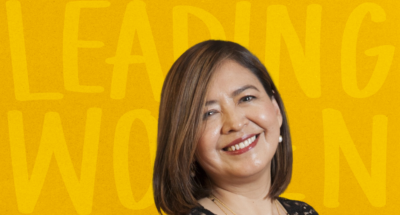
How to teach an entrepreneur to let go
Biotech entrepreneur Juana Lucia Flores-Candia explains that technology has changed the way to mentor chief executives. Here are her three ways to get entrepreneurs to focus....

by Gabriele Rosani , Mattia Vettorello Published 18 October 2023 in Strategy • 6 min read
In today’s corporate world, sustainability is no longer a superficial makeover; it has evolved into a profound redefinition of core values and practices. This transformation spans various dimensions, encompassing everything from reshaping cultures and leadership styles, to reimagining governance structures and skills. Amid this transformation, one challenge looms largest: rethinking decision-making.
Historically, decision-making rules and criteria have been skewed towards profit maximization, often sidelining the interests of other stakeholders, such as employees, suppliers, society, and the environment. This deeply ingrained approach hampers the transition towards a multi-stakeholder perspective, even among conscious leaders. The absence of stakeholders during decisions complicates matters further. Inviting them to every decision is impractical.
This dilemma raises a crucial question: how can decision-makers compensate for the absence of stakeholders? A seemingly straightforward solution is replacing them with internal experts who can act as proxies. Tempting, yet dangerous, this approach risks mirroring the trap of equating a salesperson’s view with that of the customer.
A practical alternative is to systematically wear the hats of multiple stakeholders when making decisions. By doing so, decision-makers are forced to think from different perspectives. This approach, what psychologists call “perspective-taking”, is already applied in management fields such as negotiation, innovation, and DE&I. Extending the application to the increasingly relevant domain of sustainability can help managers ponder how each stakeholder may benefit from the decision (or be affected by it), how to balance trade-offs, and mitigate negative externalities.
To facilitate this approach, we developed the Perspective Circle. This tool visually divides decision-making into sectors, each corresponding to a specific stakeholder group, such as customers, suppliers/partners, employees, shareholders, society (including communities, governments, NGOs, and environmentalists), and the environment itself. In a team-based setting, decision-makers don the “perspective hat” of each stakeholder, role-playing to identify key benefits and concerns, all while considering trade-offs and externalities.
There are five steps to sustainable decision-making with the Perspective Circle:
Start by outlining the hypothesis to be stress-tested and align the team around it. The initial statement describing the hypothetical decision is placed at the top of the Perspective Circle.
On the outer layer of the Perspective Circle, identify specific stakeholders for each sector, adding context to the scenario with precise stakeholder names.
Next, wear the hats of each stakeholder to identify and map their unique benefits and concerns. This can be done through rounds, following the circular sectors, or by splitting participants into sub-teams, each representing one stakeholder.
In the middle layer of the Perspective Circle, evaluate the main shared concerns and conflicting benefits, and discuss possible trade-offs.
Finally, synthesize the perspectives to revise the initial decision statement. Write a new statement, in the center of the Perspective Circle, that encapsulates the multiplicity of perspectives and serves as the outcome of this exercise.

To illustrate the effectiveness of the Perspective Circle, consider the case of Fernanda, a product manager of a food company in southern Europe, evaluating a shift from traditional plastic packaging to a range of alternatives, including a biodegradable one. All the options have different implications in terms of the functional performance and recyclability of the product.
Her team follows the five-step process, engaging with stakeholders and eventually arriving at a revised, sustainable, decision statement.
“Shift from current plastic to certifiable biodegradable packaging, considering the trade-off between environmental impact and the needs of [our logistic partner] as for thermomechanical properties, and the needs of [our retailers] as for lasting shelf, as well as the concerns of [our material suppliers] in switching technology by promoting joint development.”
The Perspective Circle offers numerous advantages, from inviting a comprehensive analysis of the stakeholders affected by a decision, to raising awareness of the expected benefits and concerns attached to choices. Even in cases where the Perspective Circle isn’t fully completed, its mere application can trigger valuable discussions on possible trade-offs and prompt managers to engage with, and listen to, particular stakeholder groups.

While the tool can be used by individuals, it is most potent in team discussions and workshops, serving as a powerful visual aid to communicate, share, discuss, and review decision rationale. To scale its adoption throughout the broader organization, we recommend the following actions:
Ultimately, in today’s complex business environment, where sustainability and multi-stakeholder interests are paramount, most decisions have a high degree of ambiguity. In this context, traditional criteria and tools for decision-making are of little help as they overlook externalities. The Perspective Circle is a valuable compass that can guide decision-makers towards more informed, responsible, and sustainable choices.

Principal of Capgemini Invent and Director of Content and Research at the Management Lab
Gabriele Rosani is a Principal of Capgemini Invent and Director of Content and Research at the Management Lab by Capgemini Invent.

Strategy & Innovation Lead at frog, part of Capgemini Invent
Mattia Vettorello is strategy and innovation lead at frog, part of Capgemini Invent. Mattia contributed to top tier journals on innovation management and strategic decision making such as Creativity and Innovation Management. He is the creator of the award winning Innovation System Roadmap.

20 November 2023 • by Juana Lucia Flores-Candia in Leadership
Biotech entrepreneur Juana Lucia Flores-Candia explains that technology has changed the way to mentor chief executives. Here are her three ways to get entrepreneurs to focus....

17 November 2023 • by Michael D. Watkins in Leadership
Executives winning promotion must navigate their transition with a balance of humility, respect for legacy, and a vision for the future....

14 November 2023 in Leadership
Henrik Andersen discusses with IMD President Jean-François Manzoni the challenges of navigating supply chain disruptions and soaring raw material costs over the past three years, and why he changed the wind farm...

6 November 2023 • by Brenda Steinberg, Michael D. Watkins in Leadership
Strategic thinking is key to career advancement – but communicating it to others is just as important. Ask yourself these 10 questions to find more ways to demonstrate your strategic abilities to...
Explore first person business intelligence from top minds curated for a global executive audience